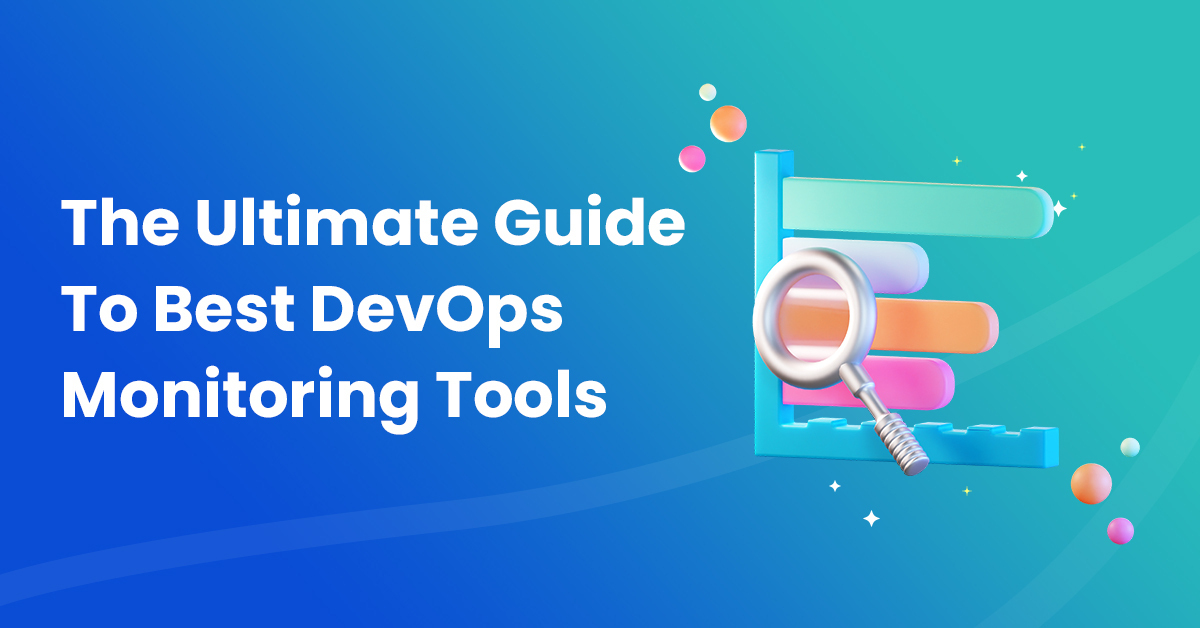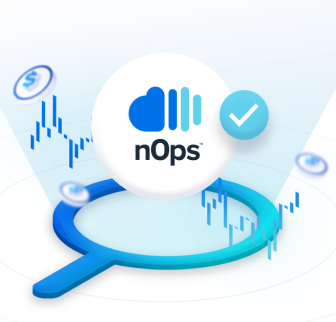DevOps is a culture, practice, and a set of tools that help software development teams improve quality and delivery speed. DevOps is a combination of development and operations and is an approach to automation that helps teams quickly and efficiently deliver software. As DevOps becomes increasingly popular, organizations are looking for ways to optimize their DevOps processes. One of the key aspects of optimizing DevOps is monitoring. Monitoring provides visibility into the performance of applications, infrastructure, and services, enabling teams to detect, diagnose, and fix issues quickly.
This blog will explore the best DevOps monitoring tools and discuss how they can help you optimize your DevOps processes. We will cover the different types of monitoring tools, the metrics they monitor, and how to choose the right one for your needs. By the end, you will have a better understanding of DevOps monitoring and be able to choose the best tool for your environment.
What is DevOps Monitoring?
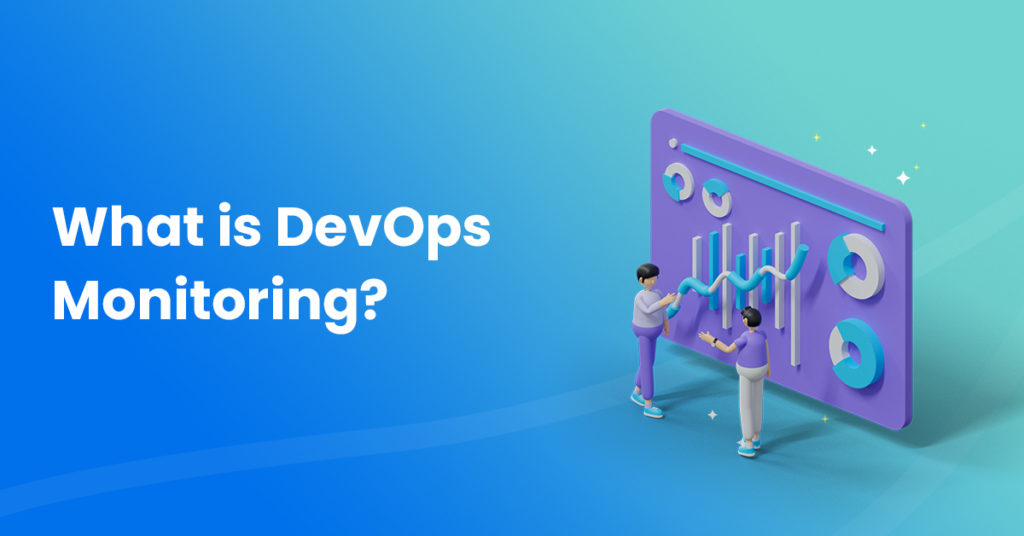
DevOps monitoring is a practice that helps organizations track the performance of applications, infrastructure, and services to detect, diagnose, and fix issues quickly. DevOps monitoring tools collect data from various sources and provide a dashboard that displays performance, availability, and usage metrics. This data can be used to identify trends and issues that can be addressed before they become major problems.
What Are The Types of DevOps Monitoring Tools?
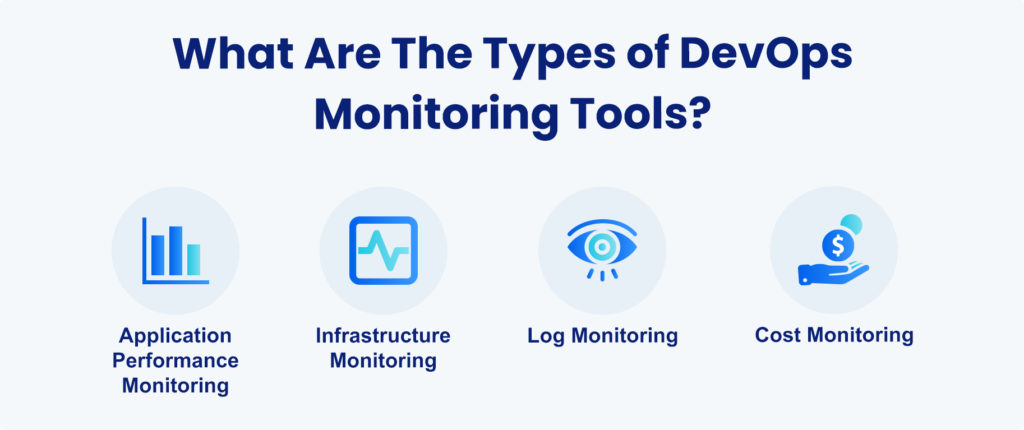
Many different DevOps monitoring tools are available, each with features and capabilities. Here are some of the most popular types of DevOps monitoring tools:
- Application Performance Monitoring (APM): APM tools are used to monitor the performance of applications. These tools track requests, responses, and errors to help identify and diagnose performance issues.
- Infrastructure Monitoring: Infrastructure monitoring tools provide visibility into the performance of the underlying infrastructure that supports applications. These tools track CPU, memory, disk usage, and network throughput metrics.
- Log Monitoring: Log monitoring tools help teams analyze log data to identify and troubleshoot issues. These tools are used to monitor system logs, application logs, and security logs.
- Cost Monitoring: Cost monitoring in DevOps is the process of tracking and managing the costs associated with running applications and services in the cloud. This includes tracking costs associated with the software, hardware, and labor. Cost monitoring is important because it helps organizations better understand their spending on cloud services, ensure they are getting the most out of their cloud investments, and identify any areas where they can improve. Additionally, cost monitoring can help organizations make informed decisions about their cloud strategy, optimize their usage of cloud resources, and improve cost-effectiveness.
AWS Cloud Cost Allocation: The Complete Guide
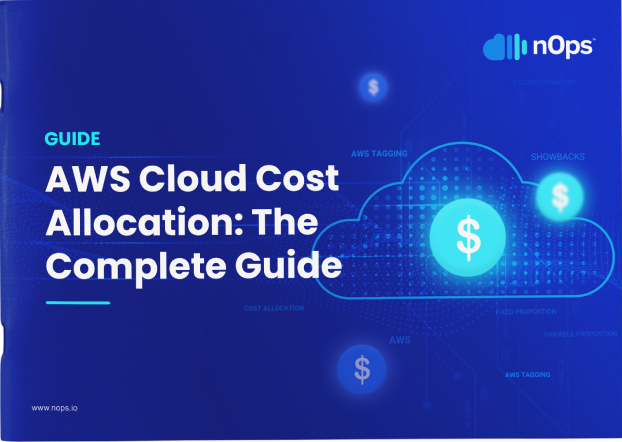
What DevOps Metrics Should You Monitor?
When choosing a DevOps monitoring tool, it is important to understand the different metrics that can be monitored. Here are some of the most important metrics to monitor in a DevOps environment:
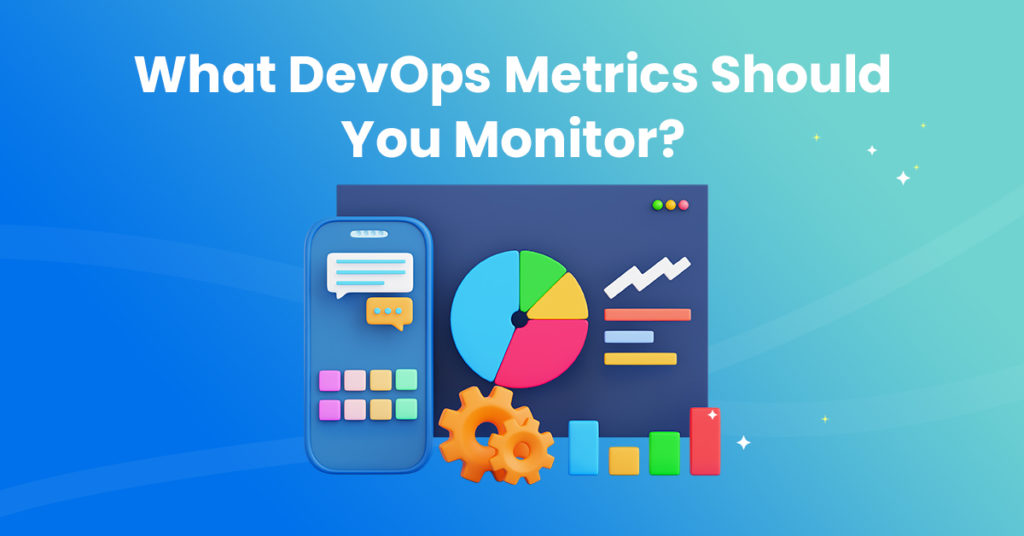
- Uptime: Uptime is the amount of time an application or service is available to users. It is important to measure this metric to ensure that applications are available when they are needed.
- Response Time: Response time is the amount of time it takes an application or service to respond to a request. Measuring this metric can help identify performance issues and optimize response times.
- Error Rate: Error rate is the percentage of requests that fail. It is important to monitor this metric to identify and address issues quickly.
- Throughput: Throughput is the amount of data that can be processed in a given period of time. Measuring this metric can help identify issues that may be limiting performance.
Top DevOps Monitoring Tools
DevOps monitoring tools are used to keep track of the performance and health of applications, services, and infrastructure. These tools help identify and address issues in a timely manner, maximizing the efficiency of the development process. So, here’s the list of the top DevOps Monitoring Tools your business needs:
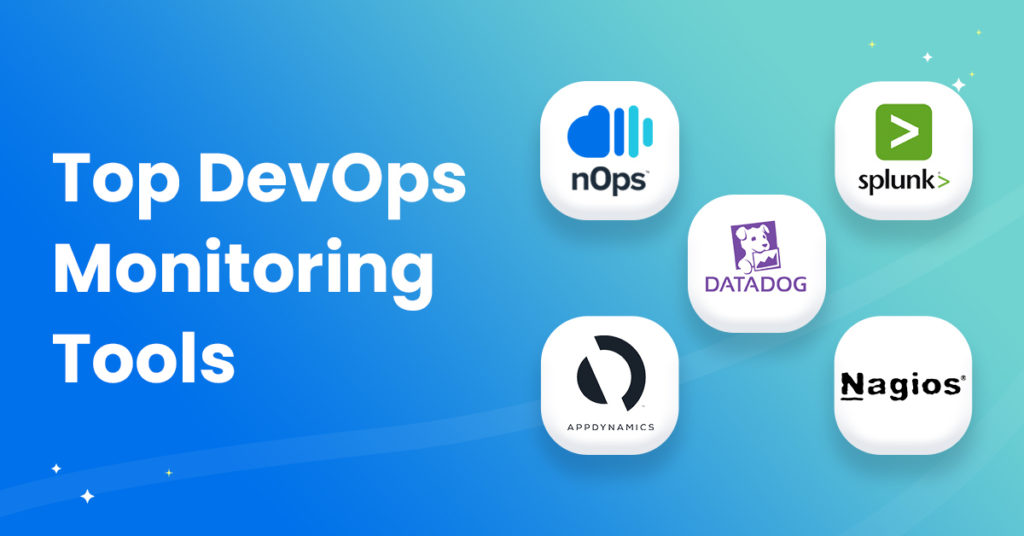
1. nOps
nOps is a cloud-native DevOps monitoring tool that helps teams manage, monitor, and operate their distributed systems. It is designed to provide visibility into the health of services and applications across multiple environments. nOps provides real-time insights into the performance of your applications and services and helps you identify and address issues quickly. It also helps you troubleshoot issues and optimize your system for better performance.
2. Datadog
Datadog is an advanced monitoring tool that enables organizations to collect and analyze their DevOps metrics. It provides real-time visibility into the performance of their applications and infrastructure. It also provides users with comprehensive reporting and analytics capabilities. Datadog provides users with a unified view of their DevOps environment, enabling them to identify and resolve issues quickly.
3. Splunk
Splunk is an analytics platform that enables organizations to analyze and monitor their DevOps environment. It allows users to search, analyze, and visualize their DevOps data. Splunk lets users detect their DevOps environment’s patterns, anomalies, and trends.
4. AppDynamics
AppDynamics is an application performance monitoring tool that enables organizations to monitor their applications’ real-time performance. It also provides users with detailed performance data, enabling them to troubleshoot issues quickly. It also provides users with analytics capabilities that help them understand the performance of their applications over time.
5. Nagios
Nagios is an open-source monitoring tool that enables organizations to monitor their DevOps environment. It allows users to monitor their servers, applications, and services. It also provides users with alerting capabilities that notify them when something goes wrong.
Why Is nOps The Best DevOps Monitoring tool?
nOps is number one on our list of top DevOps monitoring tools for several reasons. DevOps monitoring is an important part of optimizing DevOps processes. And nOps Monitoring Features provide visibility into the performance of applications, infrastructure, and services, enabling teams to detect, diagnose, and fix issues quickly.
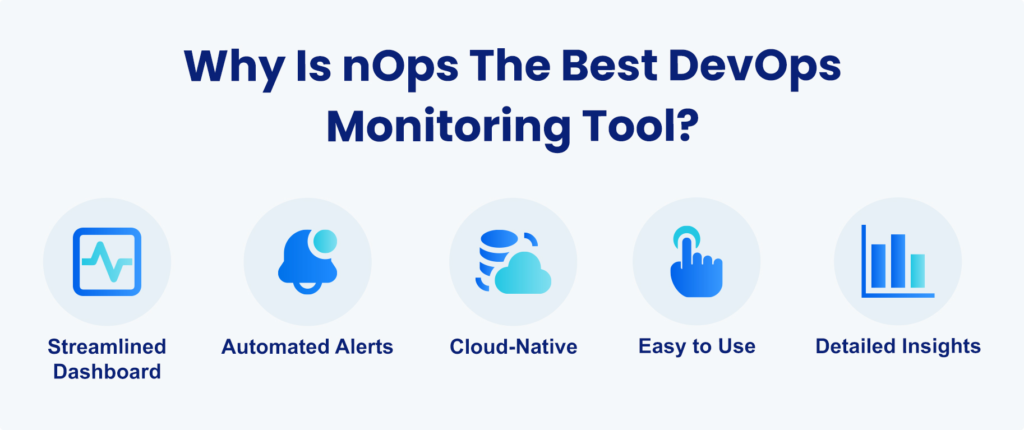
- Streamlined Dashboard: nOps offers a streamlined dashboard that provides an overview of the performance and health of your applications and services. It provides real-time insights into the performance of your system and helps you identify and address issues quickly.
- Automated Alerts: nOps provides automated alerts that help you identify potential issues before they become major problems. This helps you stay ahead of any potential problems and address them before they cause major disruption.
- Cloud-Native: nOps is a cloud-native monitoring tool, meaning it is designed to run in the cloud. This makes it easier to use and scale, eliminating the need to set up and manage on-premise hardware.
- Easy to Use: nOps is easy to set up and use. It offers a user-friendly interface that allows teams to access and manage the system.
- Detailed Insights: nOps provides detailed insights into the performance and health of your applications and services. It helps you identify and address issues quickly and optimize your system for better performance.
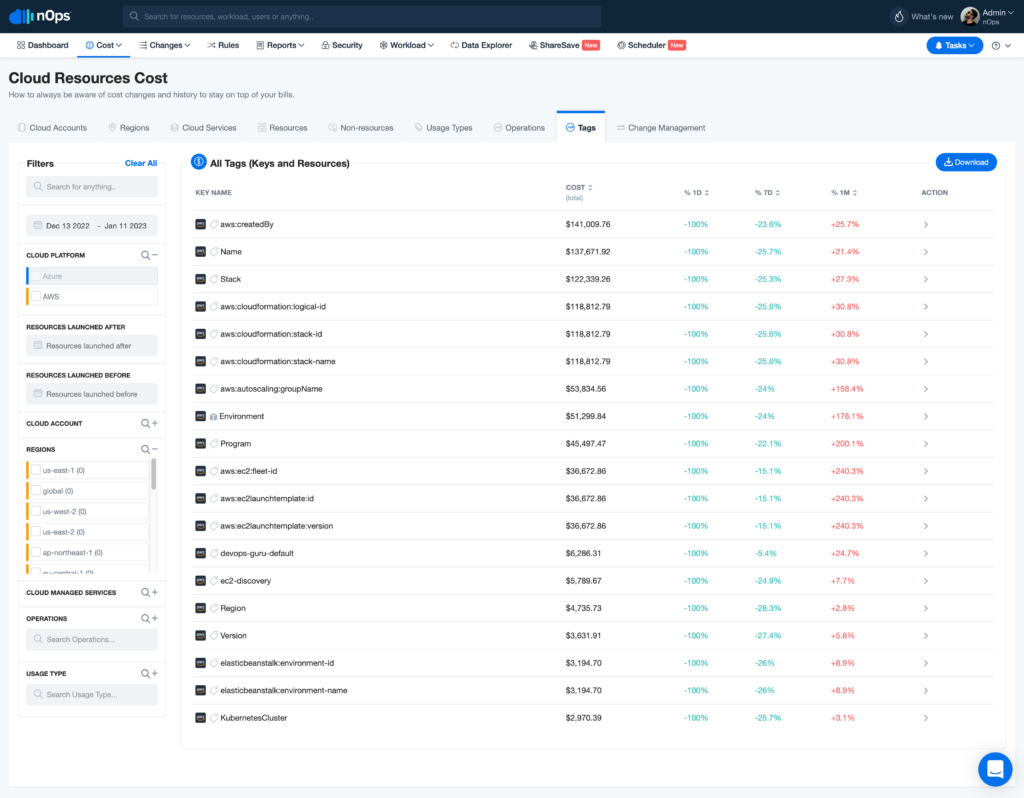
nOps is a fully automated FinOps platform that helps companies automatically identify and eliminate cloud waste. Its USP stands in its unique pricing model, i.e., you only pay for what you save as only a percentage of your actual saving streamlined through nOps will be charged. With our ShareSave solution, you can consolidate cloud accounts into a single pricing model and offer ongoing visibility to change requests. This helps you easily manage cloud costs and save more money. Sign up for nOps today. With nOps, you don’t pay unless we are saving you money.
.png?width=1920&height=1080&name=Landscape%20(4).png)

